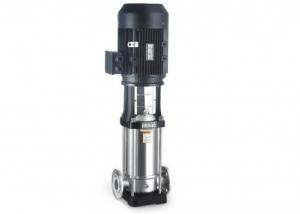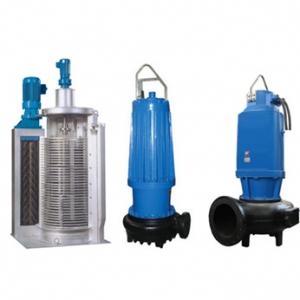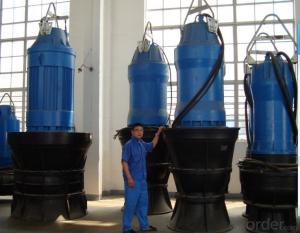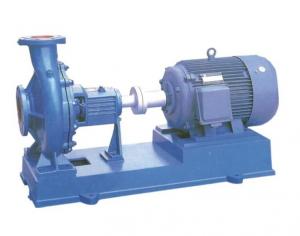Submersible Water Pump, Sewage Submersible Pump LWS-0.75F
- Loading Port:
- Ningbo
- Payment Terms:
- TT OR LC
- Min Order Qty:
- -
- Supply Capability:
- 5000 set/month
OKorder Service Pledge
OKorder Financial Service
You Might Also Like
Specifications
It's more compact,light on weight,easy for use.
It's suitable for home water supply,garden irrigation,building site,aquaculture
Application
Applying for building site ,hotel,restaurant,ship,mine,urban sewage,dejecta discharge,garden and farm irrigation, it also can be used for transporting liquid feed for fishing aquaculture and transporting dilute paper pulp.
Materials
· Pump body:Cast iron
· Motor housing:Stainless steel
· Motor wire:Copper
· Impeller:cast iron
· Mechanical seal:Ceramic&Graphite
· Shaft:45#steel
· Bearing:China
· Insulation class:B
· Protection class:IP68
Electrical Data
Rated power:0.75KW
Rated voltage:220/380V
Mains frequency:50/60Hz
- Q: What does the temperature range of the pump mean?
- Not be too cold or hot water, will be frozen.
- Q: What is the definition of the pump in the capacity of the pump?
- I don't know very well about your work there;General pump is a one, or two with a preparation work; pump and standby pump capacity is big, the maintenance of pumps is provided here, said in the overhaul, overhaul maintenance enabled pump, pump capacity can be greatly reduced, as long as the pump 1/4, thus reducing the volume of the standby pump the.
- Q: looking for the comparison and then finaly the conclusion about the water pumps instaaled in the IC engines. Where we should stick to the tradional mechanical driven water pumps or electrical water pumps? which one is better!! any information/ response is appreciated
- The belt driven pump is operating all the time the engine is running. This takes some of the HP of the engine and causes wear and tear of the belt and the pump. The electric driven water pump is operated on demand from the water thermostat and only runs when the water temp. rises above the setting and shuts off again on returning to the setting. Saves engine HP and pump wear and tear...It's much more efficient.
- Q: How large is the starting current for a 1.5 kW submersible pump?
- The starting current is 2-7 times the power
- Q: can't get the pulleys to line up I know I have a mid 70's 400 and the water pump is later than 1969 but I can't find a pulley that works every one is about a half inch off I bought a aftermarket set of underdrive pulley's from march performance and still the same problem the water pump is a half inch off there was no long or short water pump right they are all the same lenght right??? The only difference I know of is that pre 1968 the pumps have a 8 bolt design and after they have a 11 bolt design is that right???
- Actually there was two main pumps for the older ones,, one was called a short shaft,,and one was called a long shaft,,the long shaft was the most popular,and it all depends on whether your car had power steering,,and air conditioning on it,,all the ones that used the long shaft usually had air,,and power steering on them also,,also some of them had a smog pump on them,,this was the main reason they used the long shaft,,most of the smog pumps got taken off and discarded down through the years,,but you still had to use the pump that had the long shaft,,this is the problem your having,,i own a repair shop in Tennessee,,and have been redoing some old cars in the past few years i to have run across the same problem you are having,,you can have a long shaft ordered for you ,,and it will work fine,,i had to use the long shaft on the one i was redoing hope this helps some.
- Q: I have a 2000 dodge 1500 the water pump is leaking and the belt is real squeaky. Are these related?
- No! The belt is squeaky because It needs to be replaced! And you're water pump is its own separate problem!
- Q: no water is running my deep well pump kicks on every 15 min. it runs for 1-2 min when it kicks off then a noise like someone threw a ball against the house. can you help
- Where is the noise coming from? The pipes, pressure tank, or starter box. I assume you have a submersible pump? If it is the starter box it could possibly be that your pump may be at fault pulling to much amperage and causing the starter box to make those kind of noises when it cuts out. Well pumps typically last for 15 to 20 years with the odd exception. Another thing to check is your pressure tank. If it is one of those old galvanized ones it needs to be charged with air regularly as they tend to become water logged giving you very little water in between pump cycles. Another thing you could try is cleaning the points with some emery on the pressure switch. They tend to become corroded and can cause problems with the pump operating at all.
- Q: My friend wants to buy a 90's somethin dodge avenger.( not sure what year) and the guy says the water pump is bad. Does the car have to be re timed when u replace the water pump?
- There is no connection between the water pump and the timing. Timing is a function of the engine ignition system, water pumps are part of the cooling system. There is no relationship. The water pump is driven by the belt that drives all the other engine accessories. Changing a water pump does not in any way effect timing.
- Q: My dad wants to buy a salt water pump for a tiny pool.I'm not sure if it's pointless for the size that the pool is, but it is 12x12x3Is it too small of a pool or are there salt water pumps meant for tiny pools that I could look at?A link to any would be nice. :)Thanks!
- salt okorder /
- Q: What is the average life of a water pump in a car?
- From my experience the average life expectancy is 7 to 10 yrs depends on usage. Seems like they last longer when used more often. Hope this answers your Q' BIG CHEO
Send your message to us
Submersible Water Pump, Sewage Submersible Pump LWS-0.75F
- Loading Port:
- Ningbo
- Payment Terms:
- TT OR LC
- Min Order Qty:
- -
- Supply Capability:
- 5000 set/month
OKorder Service Pledge
OKorder Financial Service
Similar products
Hot products
Hot Searches
Related keywords




























